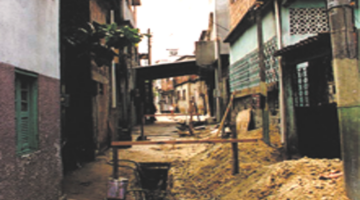





FAVELA-BAIRRO
Main objectives of the project
The Rio de Janeiro Urbanization Program for Popular Settlements (PROAP), popularly known as Favela-Bairro, is an urbanization program managed by the Rio de Janeiro City Hall. Linked to the Municipal Secretariat of Urbanism, Infrastructure and Housing, the program aims to implement urban infrastructure, services, public facilities and social policies in communities in the city of Rio de Janeiro. The main objective of Favela-Bairro is to integrate the favela into the city. The Inter-American Development Bank considers it a model project for public policies to combat poverty and misery. Nominated by the UN as an example for other countries to follow in the World Cities Report 2006/07, Favela-Bairro was also chosen as one of the world's best projects presented at Expo 2000 in Hannover.
Date
- 1994: Rehabilitación
Stakeholders
Location
Country/Region: Brazil, Rio de Janeiro
Description
In 1992, the Ten-Year Master Plan for the City of Rio de Janeiro (PDDCRJ-92) was instituted by Complementary Law No. 16, which, among other measures, determined that favelas should have the character of neighborhoods, with quality services and infrastructure. The Master Plan represented a major advance over the 1937 Building Code, whose language treated favelas as "aberrations". Following the new guidelines of the Master Plan, Favela-Bairro emerged in 1993 as one of several municipal neighborhood improvement projects proposed by the new city hall leadership. The program was conceived by the then Municipal Secretary of Urbanism, and would be coordinated by the newly created Municipal Housing Secretariat. The program emerged from a consensus on the need to improve favelas following the following basic principles: The recognition of housing as a citizen's right; The understanding that housing should be integrated into the urban space; The assumption that public investments in housing should only be made when necessary to improve the urban environment and infrastructure or to address risk situations. The Favela-Bairro program prioritized the incorporation of favelas into the existing urbanized fabric, for example, by normalizing the urban situation and providing these neighborhoods with adequate urban infrastructure. According to GEAP (Executive Group on Popular Settlements), the objective of the program was "to build or complement the main urban structure (sanitation and democratization of access) and provide the environmental conditions to read the favela as just another neighborhood in the city. The program is distinguished by having as a principle to intervene as little as possible, focusing more on the recovery of public spaces and the implementation of infrastructures. After its creation in the context of the Master Plan, Favela-Bairro was incorporated into Rio de Janeiro's Strategic Plan (1995), whose objectives at the time were: the improvement of living conditions in the favelas through the implementation of basic services (leisure, health, education, water, sewage, electricity, etc.), the requalification of accesses and the regularization of land that would allow them to be characterized as neighborhoods. Thus, the Favela-Bairro program became part of two planning models: the Master Plan and the Strategic Plan. In 1994, the IAB/RJ organized the Public Contest for the Selection of Methodological and Physical-Spatial Proposals for the Urbanization of Favelas in the Municipality of Rio de Janeiro, in order to develop intervention projects. This first initiative targeted fifteen small and medium-sized favelas. For the execution of the first stage of the Program, resources from the municipality and from agreements with the European Union, the International Bank for Reconstruction and Development (IBRD) of the World Bank and the Inter-American Development Bank (IDB) were incorporated. The competition was open to teams of architects and urban planners established in the city of Rio de Janeiro. The competition was organized with the support of the Institute of Architects of Brazil of Rio de Janeiro and received applications from 34 teams, mobilizing about 150 professionals, which represented a very significant acceptance considering the still small number of offices dedicated to the theme of low-income housing in the State of Rio de Janeiro.

